A Hmong View of Hanzi
« previous post | next post »
A couple of days ago in class I was discussing the power and prestige of Chinese characters, even among people who are illiterate. I mentioned how illiterate villagers in northern Shaanxi (north of Mao's base at Yanan) wanted to participate in literate culture, but didn't even have access to a scribe who could write a New Year's couplet on strips of red paper to paste on the sides and top of their doorframes. Instead, they merely drew series of circles to substitute for characters, hence LEFT: OOOOO TOP: OOOO RIGHT: OOOOO.
This, for me, was the most powerful scene in the 1984 film entitled "Yellow Earth" (Huang Tudi), directed by Chen Kaige. Most people who see the film don't even notice this scene, but it had an enormous impact on me that has lasted to this day, more than a quarter of a century after I first saw the film.
My discussion of the innate power of Hanzi prompted one of my students, Matt Anderson, to send me the following:
Here are some pictures I took in the mountains of far northern Viet Nam in 2008 and 2009 — I think they do a good job illustrating the cultural reach of Chinese characters even among those illiterate in them.
The first picture shows the wall of a makeshift dorm for elementary school students in Bắc Kạn province (the kids live too far away to walk to school each day).
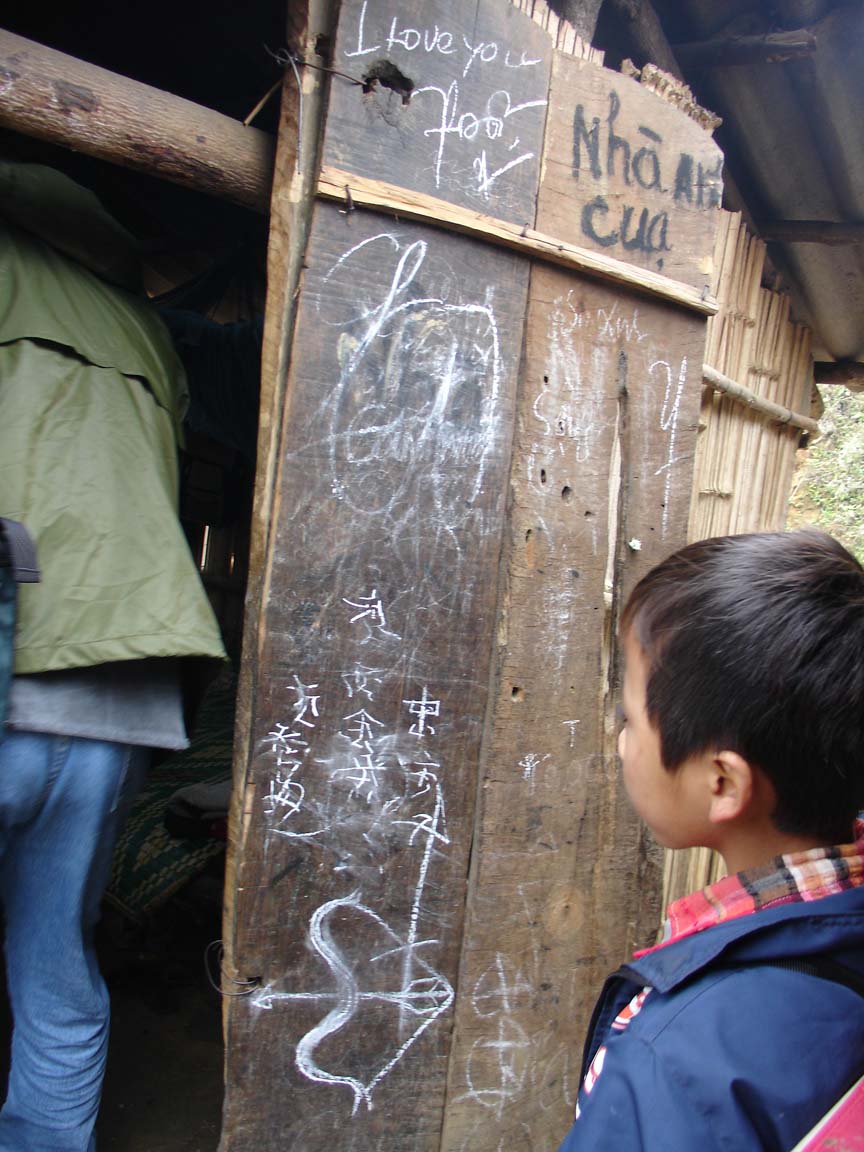
The kids who live there are mostly Hmong, and most of them can't speak Vietnamese, much less Chinese, but they've written some "Chinese characters" on the wall, as well as some Vietnamese, the English phrase "I love you", and a nice drawing of a bow which, coincidentally, looks a lot like the oracle bone graph for shè 射. It's too bad there doesn't seem to be any Hmong on there, to add one more language. Here's a closeup of the "Chinese".
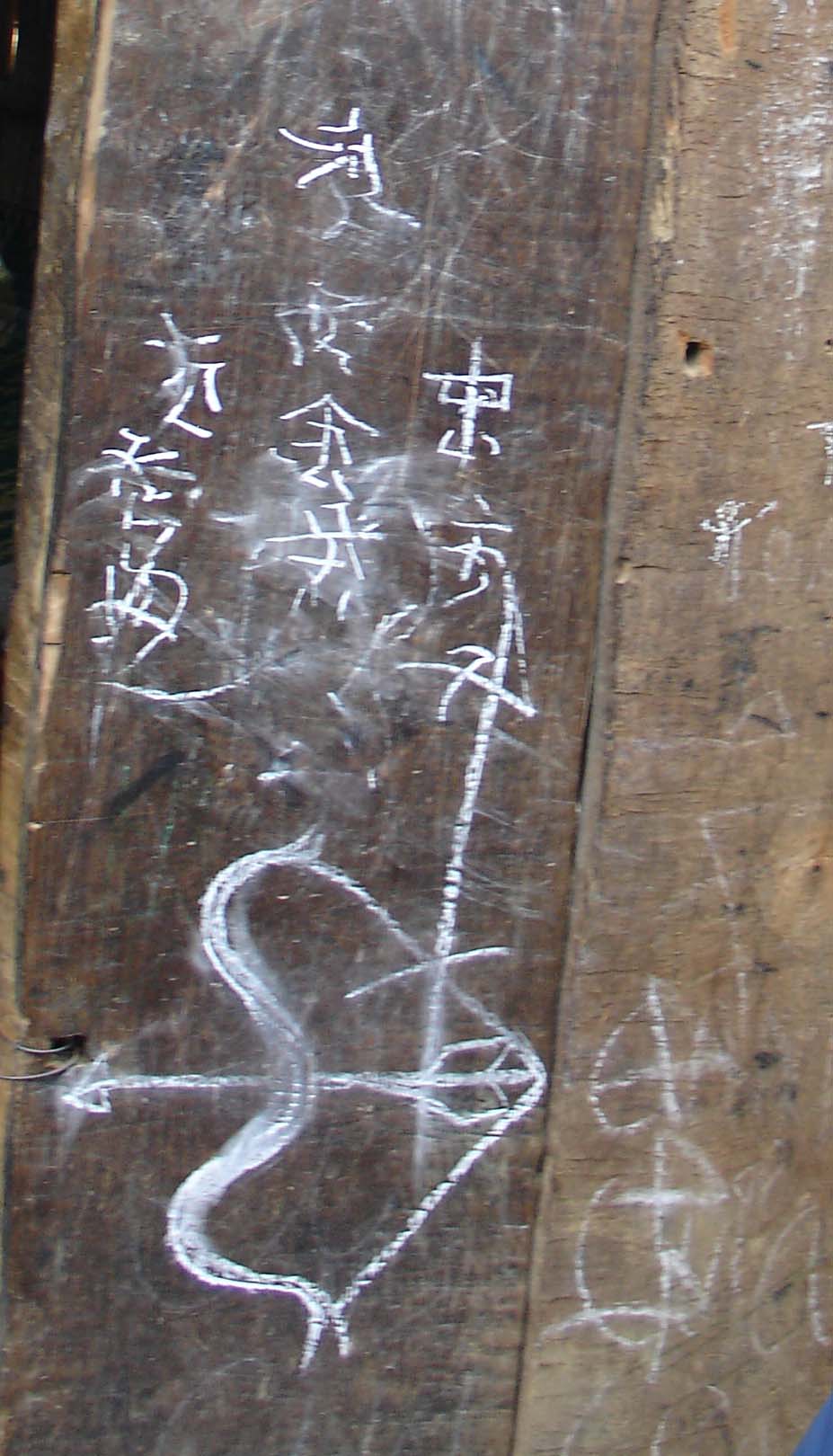
Some of the characters could almost be real ones (I think I can make out zhōng 忠 [VHM: maybe]), but they mostly seem invented. The next picture shows some of the other dorms at this school, for context:
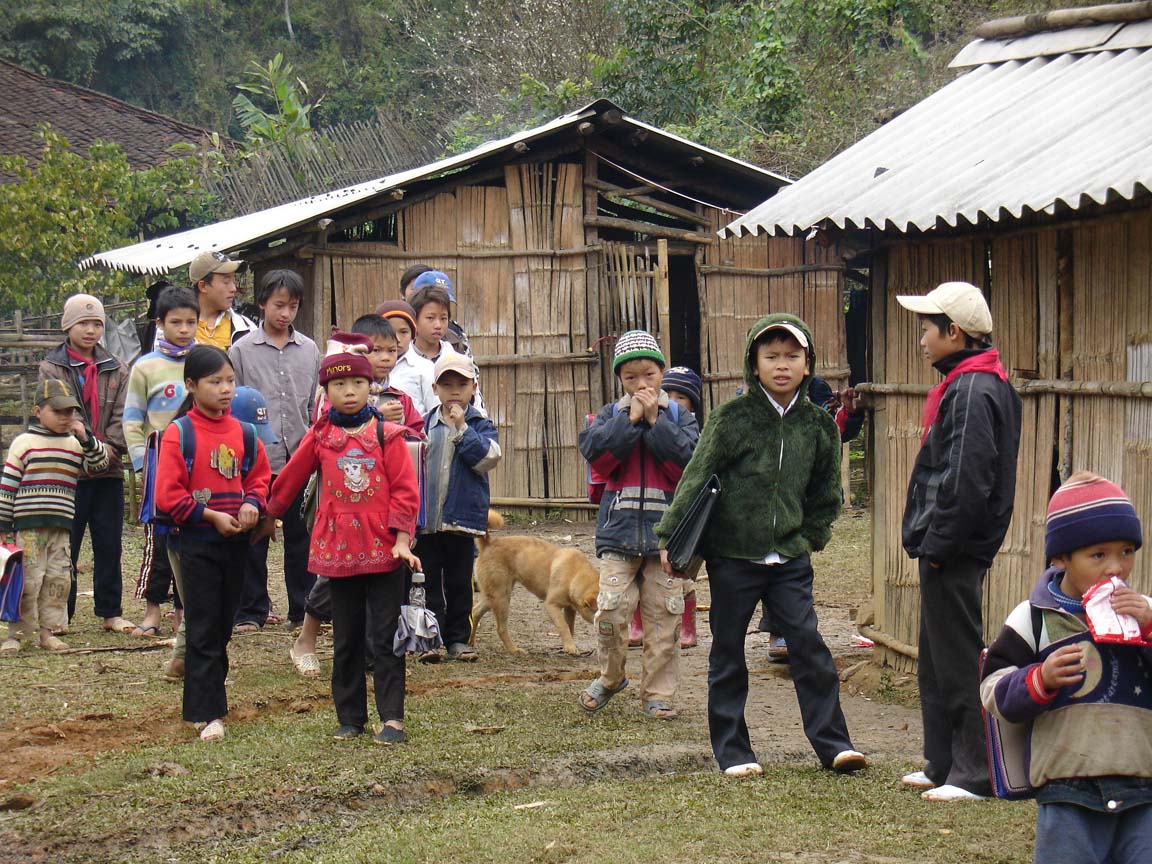
The next picture shows some carved graffiti on the side of a school in Hà Giang province. There are some real characters here, but I can't resolve them into anything that makes any sense (except perhaps dàifu ["doctor"] or dàfū ["senior official"] 大夫, if read from right to left).
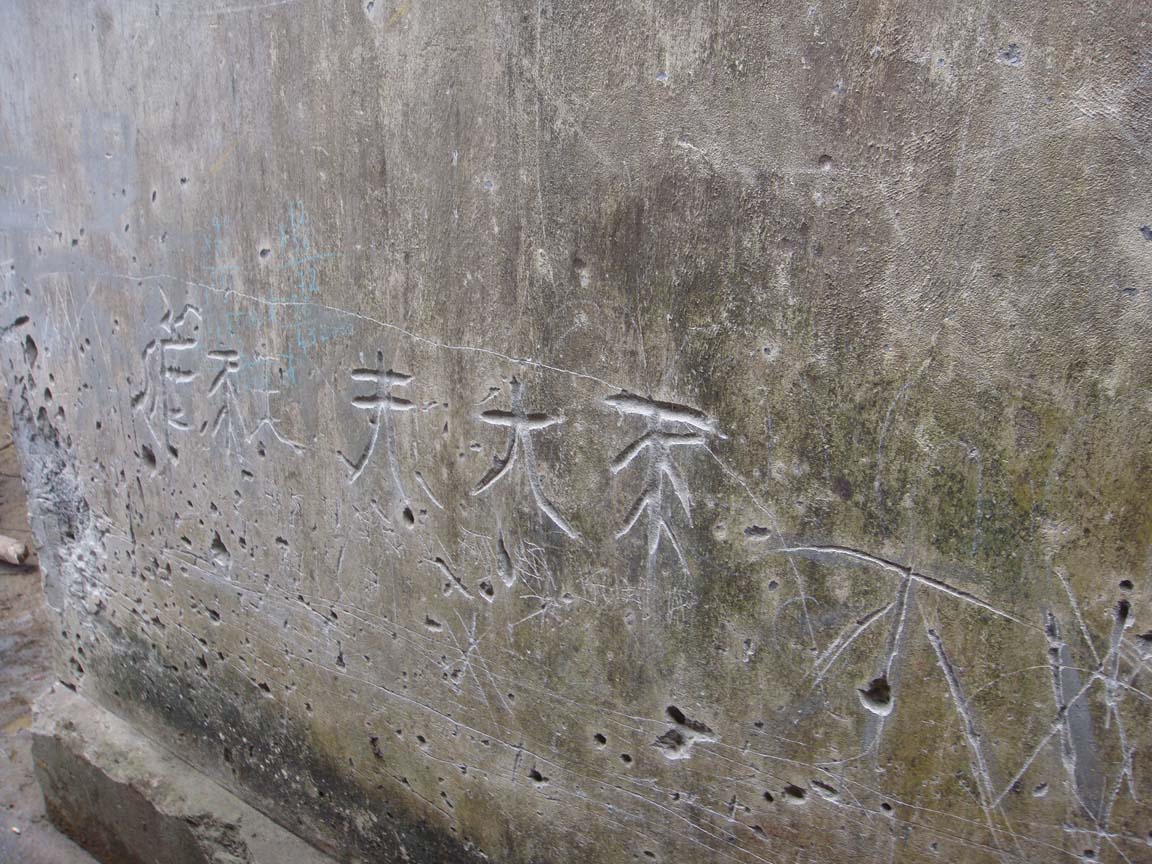
The last photograph is of the school where this one was taken.
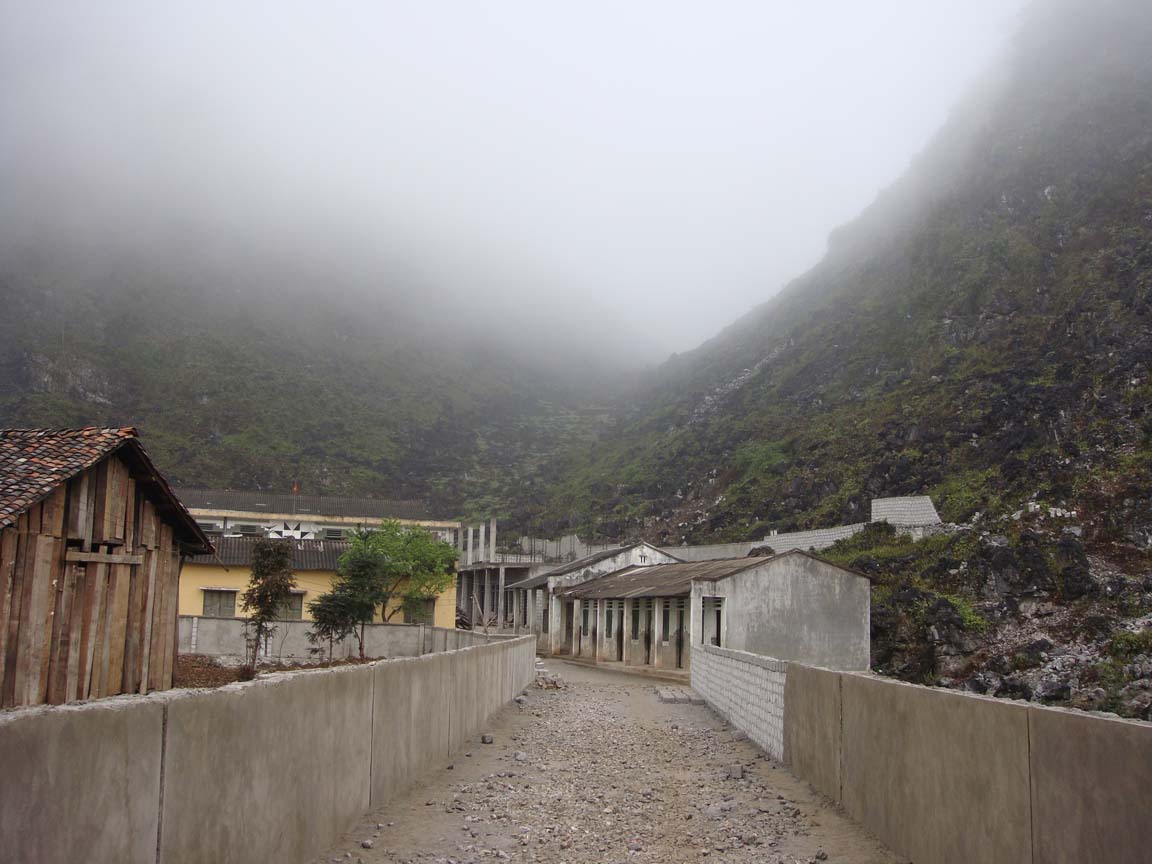
Most of the kids at this school were also Hmong — very few of them were really able to speak Vietnamese (though, of course, that's their language of instruction).
The kids at both of these schools have probably never even been to their local district towns, much less the nearest city, so they've probably never seen any Chinese signs. I'm not sure where they got the inspiration to write Chinese — perhaps the labels on products made in China? From Chinese movies on tv? From some sort of tradition? (I visited the "castle" of an early 20th century Hmong "king", also in Hà Giang province, not too far away from this school, which was as covered in Chinese characters as any structure you could find in China — I don't know if this survives as an ideal among the Hmong or something — these kids certainly wouldn't have had the chance to visit that building, though.)
?! said,
October 3, 2010 @ 4:19 am
The character for 'thread' is close to accurate, can't remember its pronunciation in mandarin, but its kunyomi is 'ito' in Japanese.
Kevin Iga said,
October 3, 2010 @ 11:22 am
Hm.. I don't see "thread" (糸) (mandarin is si, 1st tone, by the way). Where do you see that? I do see some suggestions of other characters, though.
Rightmost column: 忠市子 (second character could be 不)
Middle column, third character and below: 念労
Left column, first character: 方
John Cowan said,
October 3, 2010 @ 10:06 pm
It's hardly a coincidence that the oracle bone graph for 'bow' looks like a bow; it's what you'd expect it to look like, really.
?! said,
October 3, 2010 @ 11:13 pm
2nd from top, on left, above the bow and arrow.
Alex said,
October 4, 2010 @ 7:28 pm
The one that looks a little like zhong (loyalty) actually looks to me to be some kind of weird hybrid halfway between zhong (middle) and ben (root).
Bob Violence said,
October 5, 2010 @ 7:06 am
The bottom character in the leftmost column looks a bit like some of the handwritten "每"s I've seen, but that's a stretch. Plus I can't tell where it begins and the above character ends.
Somewhat related to Mair's introduction: the Vietnamese have managed to keep up the tradition of couplets even after dumping characters — they just use stacked alphabetic syllables. (Some used characters, but I wonder — at the risk of being condescending — if the owners knew what they actually said.)
WS said,
February 7, 2011 @ 11:08 am
it's Chunom. used in ancient vietnam. based on Chinese characters but are real Vietnamese inventions.
baosheng said,
September 30, 2012 @ 1:34 pm
Is Chunom still used, really? (apart from some researchers, scholars) I thought that it was completely extinct in everyday life..